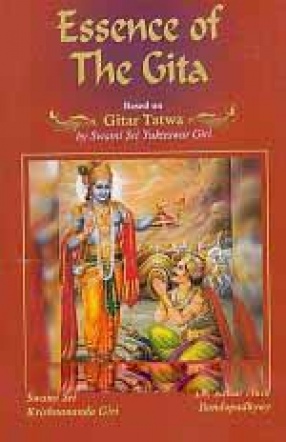The Vedanta Kaustubha
Vedanta Philosophy, in India, has become almost synonymus with Sarfikara Vedanta. Consequently, a great deal has been written and said regarding Momism of Sariikaracarya. But much is not known about Svabhavika Bhedabheda of Nimbarkacarya who flourished during the 12th century at Vrndavana. Nimbarkacarya wrote Vedanta-Parijata-Saurabha a commentary on Brahmasatras to propound his doctrine and Srinivasa, his disciple and successor wrote Vedanta-Kaustubha to explain the purport of Nimbarka's brief commentary. Therefore Vedanta-Kaustubha contains not only the explanations of sutras in details but also elucidates those vital points of this school which were left unexplained by Nimbarka. The three realities accepted are Brahman, Cit i.e. individual soul and Acit i.e. insentient being. The system is named as Svabhavika-Bhedabheda because the relation between Brahman and Cit and that between Brahman and Acit is different as well as non-different (bhedabheda). Cit being part of aitga of Brahman is different as well as non-different from Brahman and the relation is same as that between tree and its leaves, sea and its waves. This bhedabheda relation is svabhavika or natural and that is the reason` the system is being called as Svabhavika-Bhedabheda Vada. Same relation exists even between Brahman and Acit. Acit is different from Brahman, being its effect, but at the same time being non-different from Him, being dependent on Him for its existence. The present book deals with this Svabhavika-Bhedabheda of Nimbarka as explained by Vedanta-Kaustubha of Srinivasa.
Get it now and save 10%
BECOME A MEMBER







Bibliographic information